Reviews
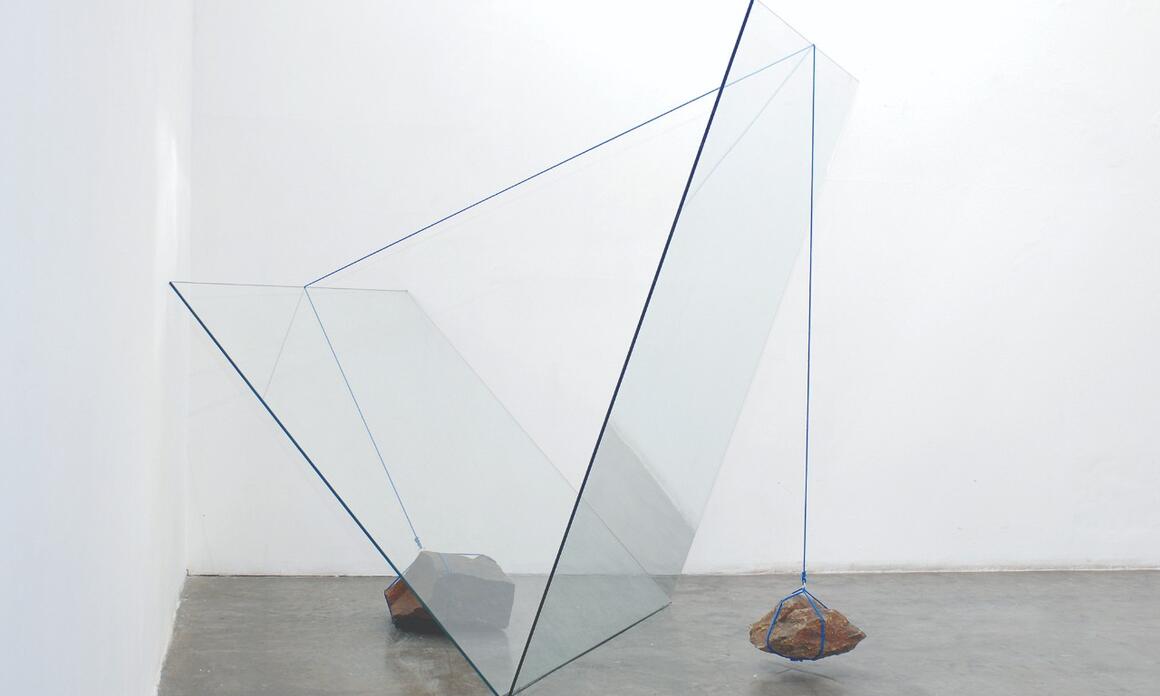
TÚLIO PINTO: A CONJUGATION OF FORCES
Brazilian curator, art critic and journalist Angélica de Moraes drew a portrait of the multimedia artist Túlio Pinto. Taking the substantial elements of the career of the artist born in Brasilia, de Moraes illustrates with her words the profile of one of the most interesting protagonists of the contemporary Latin American scene.
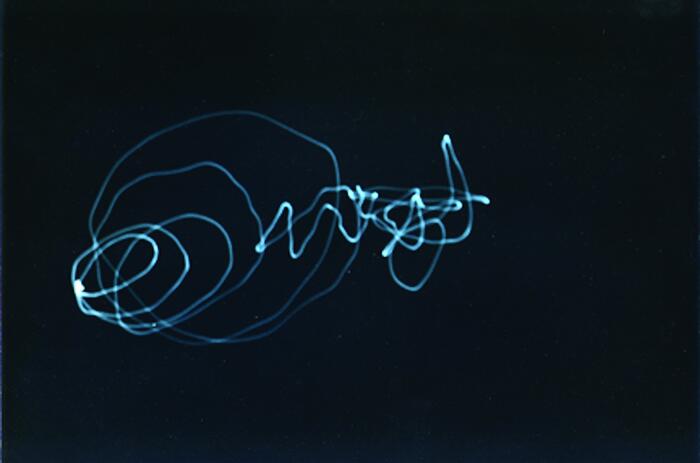
IN CONVERSATION: LEANDRO KATZ
The visual artist, writer, and filmmaker spoke with Julia P. Herzberg for Arte al Día about his work process, his interest in photography and its boundaries.
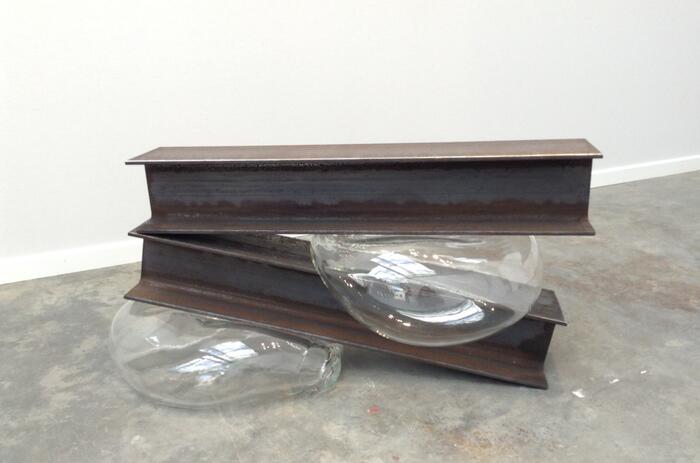
ART PARIS: THE 21st EDITION UNDER THE SIGN OF WOMEN AND LATIN AMERICA
Art Paris 2019!
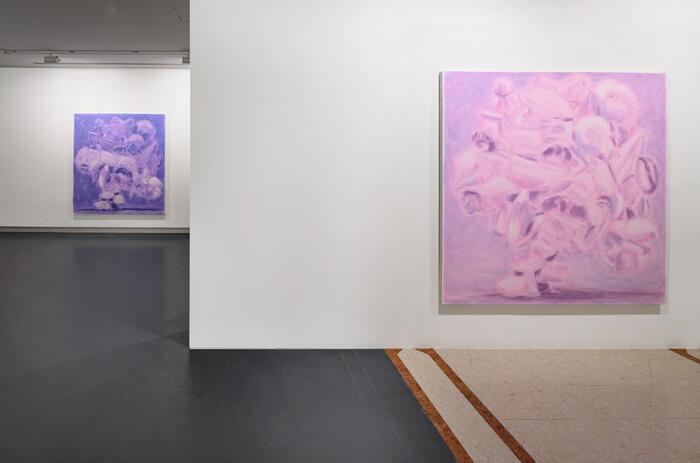
THE LATIN AMERICAN PRESENCE IN THE ARAB EMIRATES
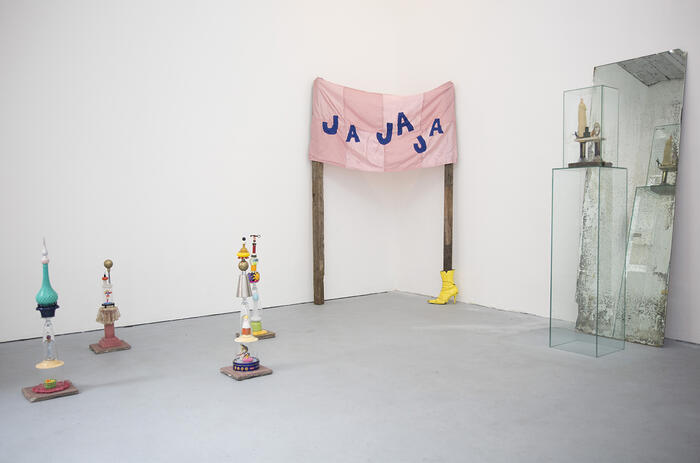
A FLAMETHROWER MANIFESTO
Curated by Joaquín Barrera, Las cosas que Crecen is the second exhibition of the young project led by the pair Jen Zapata and Andrés Matías Pinilla located in the neighborhood of San Telmo. On this occasion, and as a strong bet during the ArteBA art fair weekend, Lanzallamas attacked with a solid collective proposal.
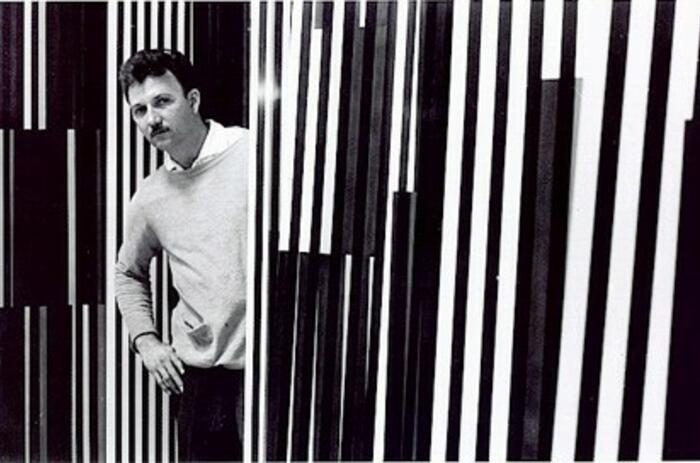
ALEJANDRO OTERO'S COLORITMOS ARE SHOWN COMPLETELY
The reasoned catalog of the Coloritmos by Alejandro Otero is published in Caracas, a volume with more than three hundred pages that delves for the first time into a chapter little studied and of great value for the Venezuelan and Latin American art of the XX century.
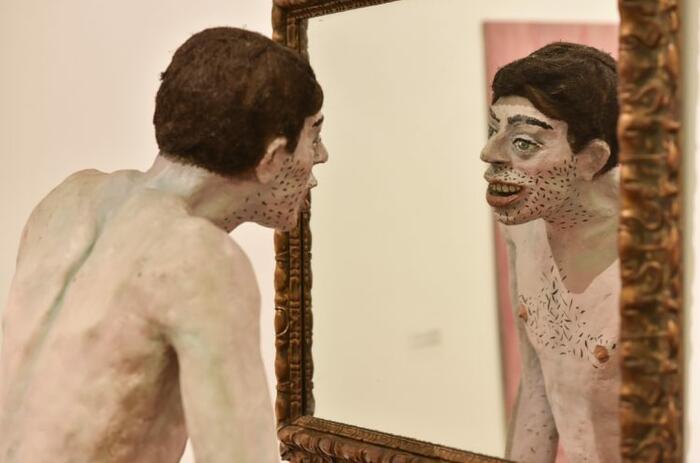
NARCISO PLEBEYO: PABLO SUÁREZ AT THE MUSEUM OF LATIN AMERICAN ART OF BUENOS AIRES
Narciso plebeyo is the title chosen for the Pablo Suárez (1937-2006) exhibition curated by Jimena Ferreiro and Rafael Cippolini at the Museum of Latin American Art of Buenos Aires (MALBA). From the part towards the whole, the sculptural installation Narciso de Mataderos (1984-1985) projects as a key to look at the whole of the portrait of a subjectivity, which in each work is imbricated with the folds of a social history. In these folds the plebeian appears as a program of intervention in the art system and as a torsion of the artistic canon. The biographical effect of the exhibition reflects a work of collective memory carried out by those who knew it and contributed to the historical thickness of the exhibition.
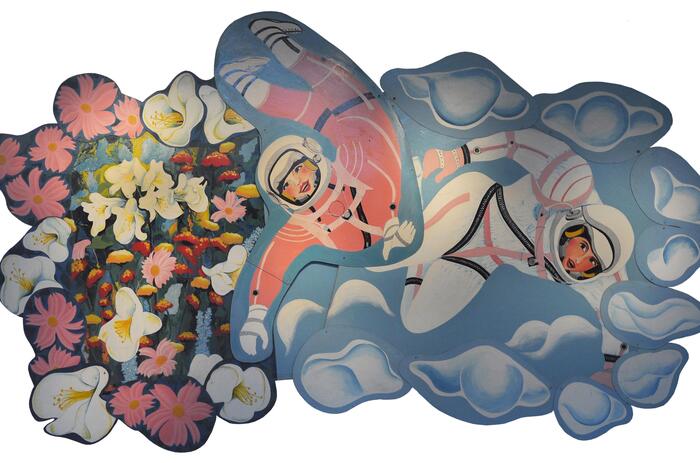
DELIA CANCELA AT BUENOS AIRES MUSEUM OF MODERN ART
Entering Delia Cancela. Reina de corazones (Delia Cancela. Queen of hearts), exhibition curated by Carla Barbero at Buenos Aires Museum of Modern Art, we are greeted by a painting with curved contours. Inward, large planes of primary colors oppress a face with absorbed eyes; outward, those planes push against the edges like a cloud in the instant before losing its contour. In Mujer y nubes (Woman and Clouds), of 1965, the formal synthesis of a pin-up figure and the effects of reverie annotated, with stereotypical signs, by a camp consciousness converge. The piece realized in co-authorship with Pablo Mesejean was, perhaps, chosen for the position it occupies by knotting three tenacious lines in Cancela’s production: visual mass culture, representations of femininity and visualized fantasy as an expanding force.
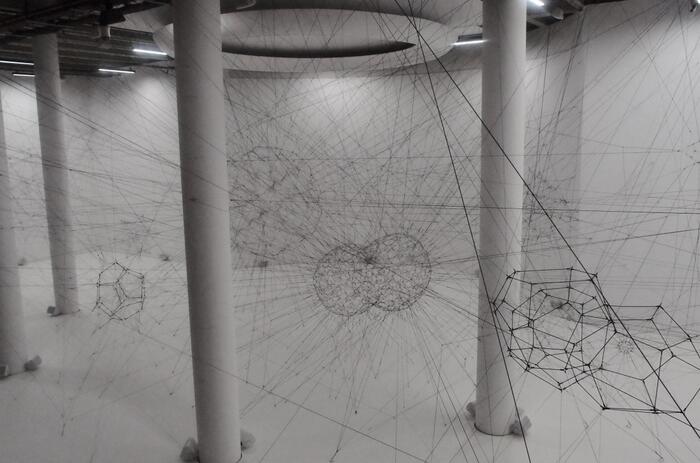
CARTE BLANCHE: TOMÁS SARACENO AT PALAIS DE TOKYO
On Air is the fourth edition of the carte blanche exhibition series that offers selected artists the opportunity to appropriate all the exhibition spaces of the Palais de Tokyo, in Paris. For the occasion, Tomás Saraceno has made his greatest project to date which brings together some of his main works, installations and unpublished creations. An interactive project that links art and science and that makes the Palais de Tokyo a place of unique sensory experience. This multidisciplinary purpose continues the artist's research on the relationship between humans and non-humans. A collaborative and evolutionary project designed to imagine new ways of inhabiting the world.
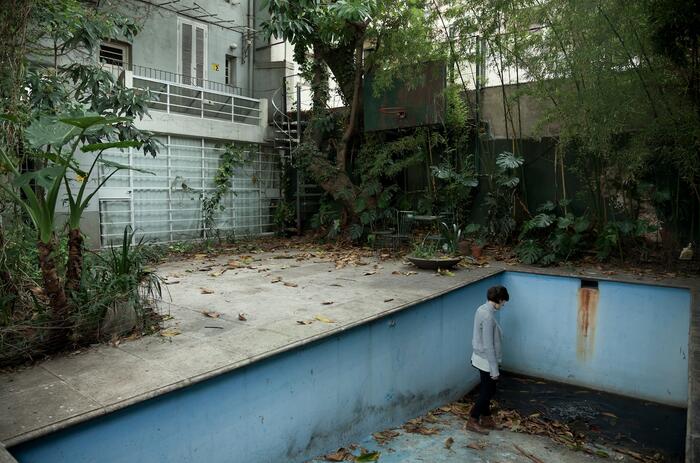
GONZALO MAGGI: FROM CINEMA TO PHOTOGRAPHY AND ART MANAGEMENT
Filled with artworks and prototypes for his next individual exhibition in La Boca neighborhood, Gonzalo Maggi’s studio-house in Villa General Miter remains hidden like a small museum. Behind two monitors, in front of the library, the young Argentinean artist takes a review over the works he has been doing throughout his career. Graduated from the Universidad del Cine almost a decade ago, Maggi changed cinema for the photography, but his production processes have more cinematographic filming than anything else.
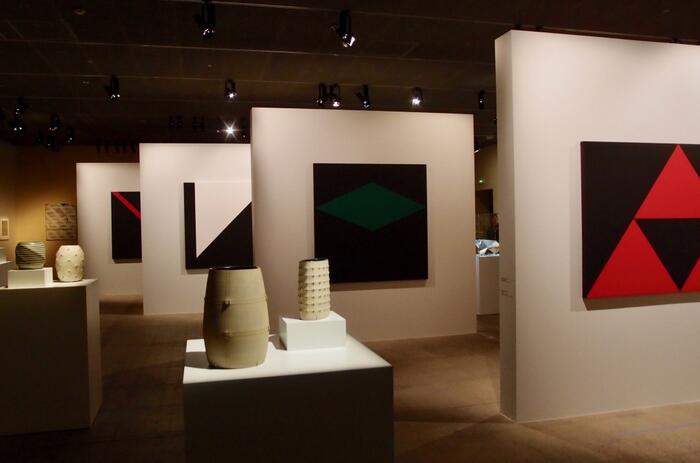
FONDATION CARTIER: GÉOMÉTRIES SUD, DU MEXIQUE À LA TERRE DE FEU
The Fondation Cartier explores the diversity of Latin America modern art through Géométries Sud, du Mexique à la Terre de Feu, enhancing the richness and variety of ornaments, colors and figures in southern continent art. Gathering about 250 works from pre-Columbian period to the most contemporary productions, including popular art, abstract art, ceramics, sculpture, architecture and basketry, the exposition investigates the multiple forms of geometric abstraction in Latin America, which are inspired in pre-Columbian art, European avant-garde’s or in indigenous cultures still alive.
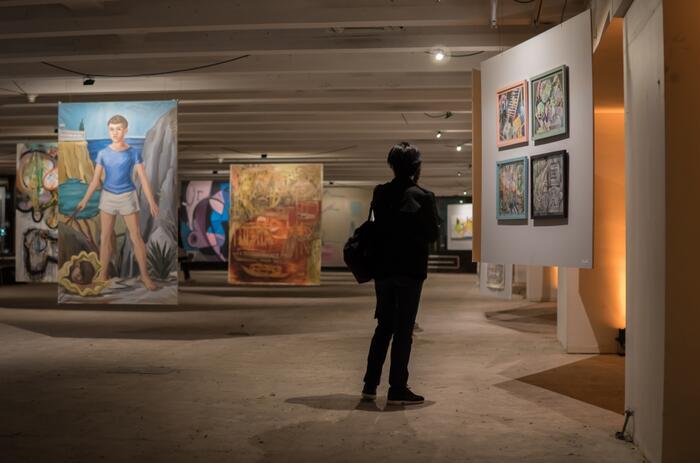
LE LE LEND, AN EXHIBITION WITHOUT INTERMEDIARIES
Until November 25, on the sixth floor of a business building in Buenos Aires City (928 Lenado N. Alem street), a sui generis collective exhibition within the Argentine contemporary scene opened. With the participation of ten of the most outstanding plastic artists since 2000 -Juan Becú, Florencia Bohtlingk, Laura Codega, Max Gómez Canle, Vicente Grondona, Máximo Pedraza, Tiziana Pierri, Déborah Pruden, Nahuel Vecino and Lorena Ventimiglia-, Le Le Lend inaugurated two weeks ago as a self-curated show.
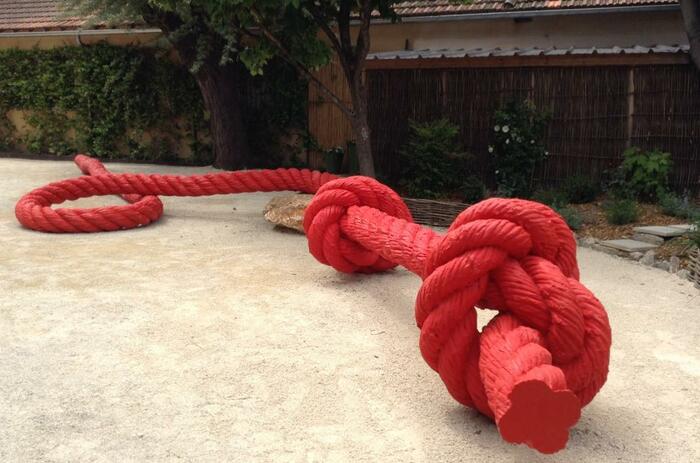
TISSAGE-TRESSAGE AT VILLA DARTIS FOUNDATION
Since immemorial times, the thread has fascinated and inspired artists and poets, and mythology has developed incessantly its mysteries: The Ariadne thread, the Moebius ribbon ...
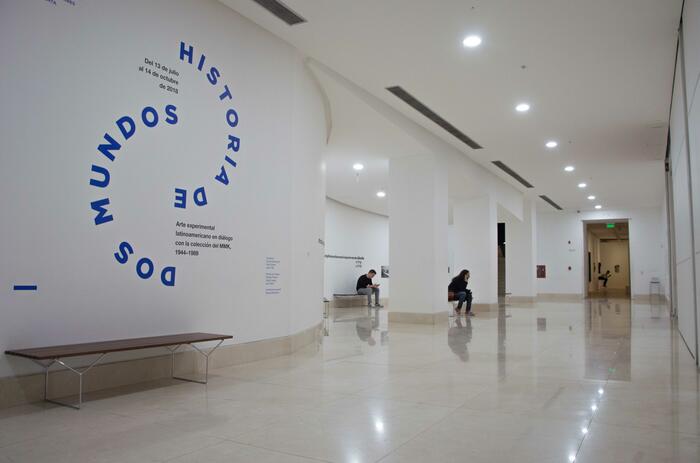
A TALE OF TWO WORLDS, AN INVERSION OVER THE HISTORICAL PERSPECTIVE?
After a significant remodeling the Museum of Modern Art of Buenos Aires (MAMBA) reopened its doors this July with an exhibition held jointly with the Museum für Moderne Kunst Frankfurt with the aim of reviewing the modern collections facing a global art history.
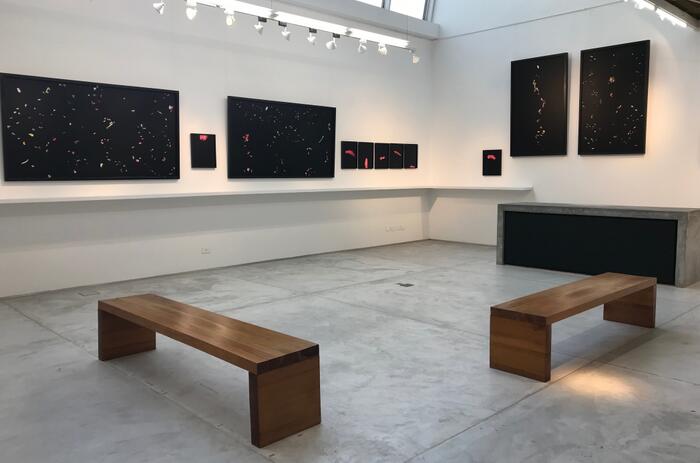
SINAPSIS, BY COTTY OXENFORD
To judge an artistic expression is not an easy thing. It is about judging the subjectivity of another within one's sensitivity. Therefore, the text is nothing more than an opinion of another opinion. And reading this is only the multiplication of that process. This is how this review should be read, because that is what the solo exhibition Sinapsis, that takes place in OdA Espacio de Arte (Buenos Aires, Argentina), is all about.
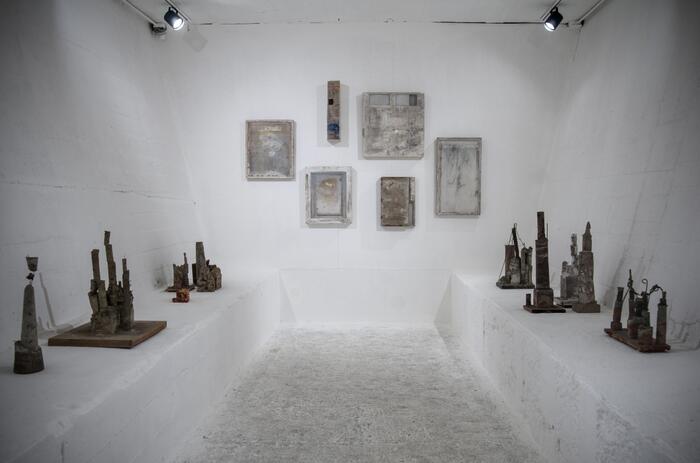
STRANGE THNIGS IN CÓRDOBA
It wanders satisfied around the borders of the global mainstream fairs circuit, Mercado de Arte Contemporáneo – Córdoba, an annual event that brings together a set of galleries, collectives and collections in the second most important city in Argentina.
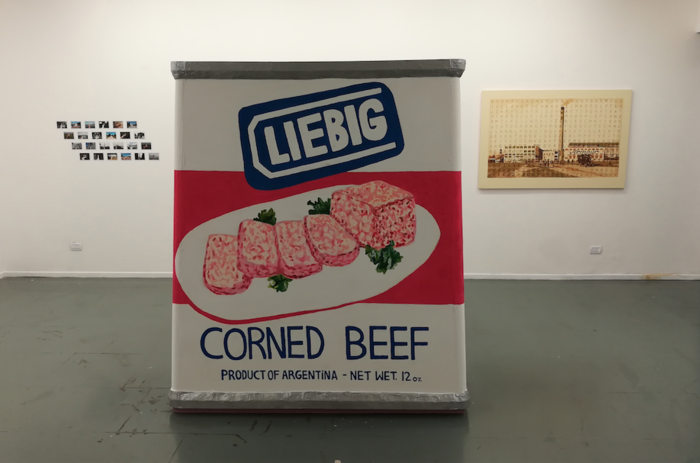
DIASPORA, AN EXHIBITION THAT EXPLORES CITIZEN CONSTRUCTION
During yesterday afternoon at Quimera Gallery, located in Güemes 4474 (Buenos Aires), Eric Markowski appropriates the gallery space with a can of meat monument. Like a great alphabet soup, the exhibition curated by Sebastián Vidal Mackinson seeks to reconstruct history and understand citizen construction processes that materialize history.
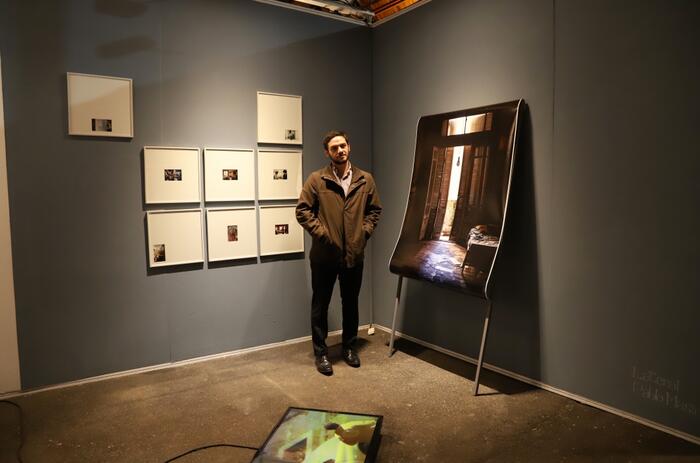
BAPHOTO 2018: FOUR ARTISTS WHO SHOULD NOT PASS UP
The fourteenth edition of the specialized fair in Latin American photography Baphoto has an international and diverse selection emphasized on the different ways of approaching artistic exploration through the medium. At the Buenos Aires Fairground La Rural, Dr. Emilio Solanet’s pavilion is divided into eight sections, each one curated by a specific curator: Ana Luiza Fonseca for Photobook Tijuana, Alfredo Aracil for Fuera de Foco, Francisco Medail for Artista Homenaje, Florencia Portocarrero for Special Rooms, Mercedes Claus for Links Projects and Rodrigo Alonso for Videoprojects.

BAPHOTO 2018: FOUR ARTISTS WHO SHOULD NOT PASS UP
The fourteenth edition of the specialized fair in Latin American photography Baphoto has an international and diverse selection emphasized on the different ways of approaching artistic exploration through the medium. At the Buenos Aires Fairground La Rural, Dr. Emilio Solanet’s pavilion is divided into eight sections, each one curated by a specific curator: Ana Luiza Fonseca for Photobook Tijuana, Alfredo Aracil for Fuera de Foco, Francisco Medail for Artista Homenaje, Florencia Portocarrero for Special Rooms, Mercedes Claus for Links Projects and Rodrigo Alonso for Videoprojects.
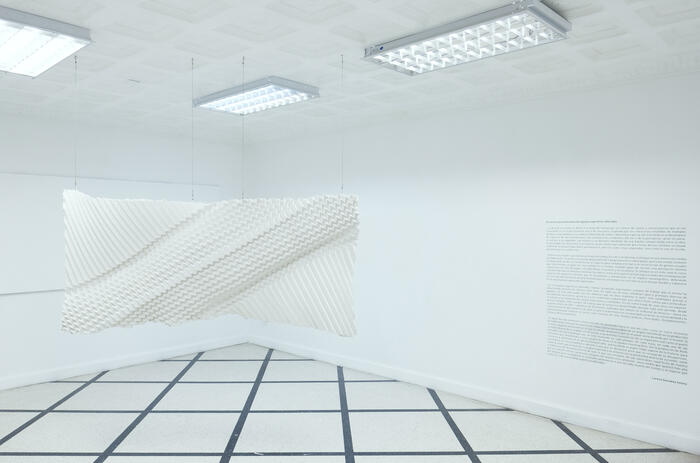
YOSHI'S ALTERED SURFACES
In the spaces of Cerquone Projects, Caracas, more than twenty works in medium and large format made by the Venezuelan artist Yoshi during the last seven years make up the exhibition Superficies Alteradas (Altered Surfaces), under the curatorship of Lorena González Inneco and the museography of Jean Nouel.
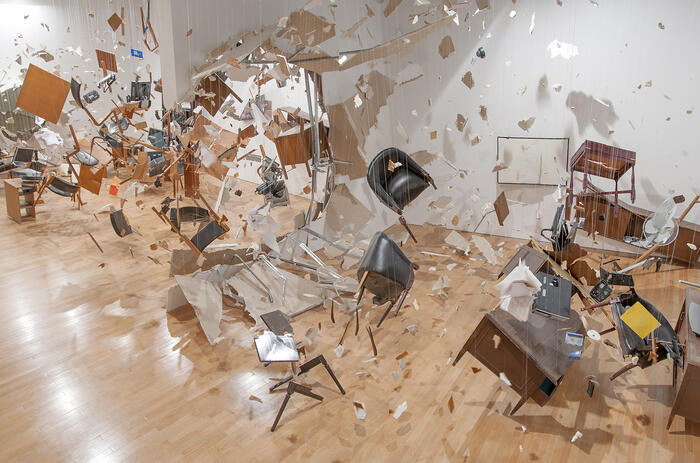
LOS CARPINTEROS, EL FINAL DE UNA ETAPA
Después de casi tres décadas de trayectoria y reconocimiento internacional, el colectivo más importante de la escena Cubana se disuelve. Los Carpinteros, el duo integrado por Marco Antonio Castillo y Dagoberto Rodríguez anunció su separación.
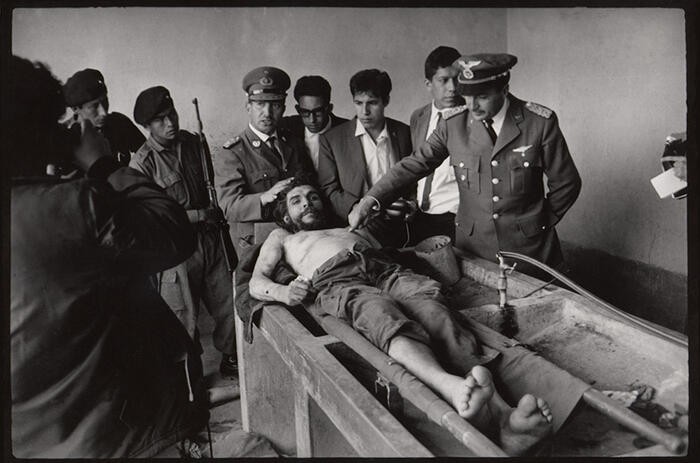
THE RESURRECTION OF THE HERO: THE LAST FACE OF CHE GUEVARA IN FREDDY ALBORTA AND LEANDRO KATZ WORKS
The noted art historian John Berger was the first to notice, in the same year of Che's death, in 1967, when the terrible image of the Bolivian photographer Freddy Alborta was published for the first time, its overwhelming similarity with the dead Christ (1480 -90) of Mantegna and with the lesson of anatomy (1632) of Rembrandt. According to Eduardo Grüner, with "the disappearance of the living body" and with the possibility of imagining Che "beyond death," his image was installed in the collective imagination as a very powerful embodiment of the myth of the revolutionary, full of Affective resonances related to the figure of Christ.
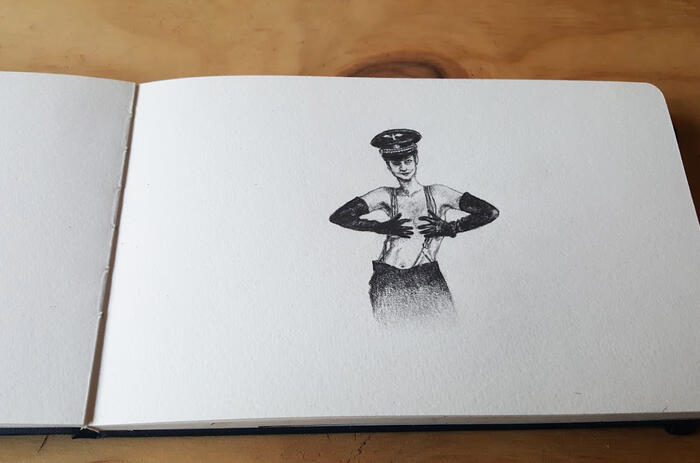
WHAT´S COOKING IN BOGOTÁ? - MEET FLORA´S 2018 RESIDENTS
(PART 3)
In the heart of San Felipe, a northern Bogotá neighbourhood in process of gentrification, there is a building where more than 20 artists from all over the world work, talk and coexist. Each one has their own workshop and does part in the activities of the curricular program, which includes encounters with curators, theorists, leaders of indigenous communities, among others.
Founded by curator José Roca in 2016 The Flora School residence turned Bogotá into a meeting point for a diverse group of people interested in art. The reasons why artists choose this residence are diverse, although everyone agrees that the experience in Bogota represents an important moment in their career.
Here are some of the residents featured in this first review.
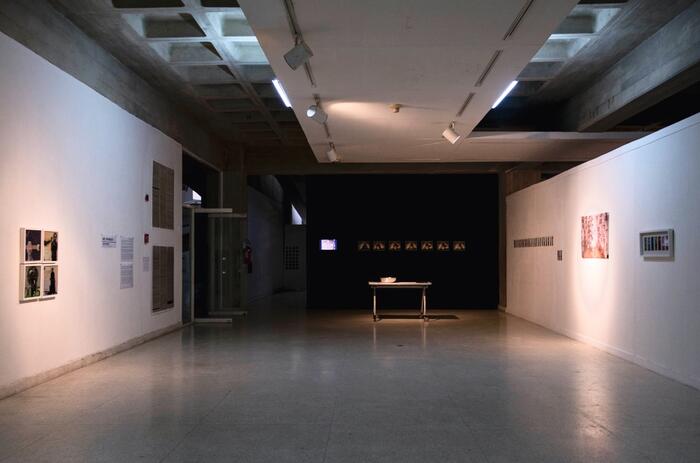
STOP AND REVIEW: WHAT IS OF THE VENEZUELAN ART SCENE?
The second half of the year has arrived and the distances between what was and what is, is usually reduced to moments of constant revision that allow us to sketch what will be, or at least form an expectation of it. For Venezuelan art, half of the year has meant the possibility of witnessing the dialogue between complexity and typical contradiction of a convulsed country, in which past and future are interrelated to speak in the present tense.
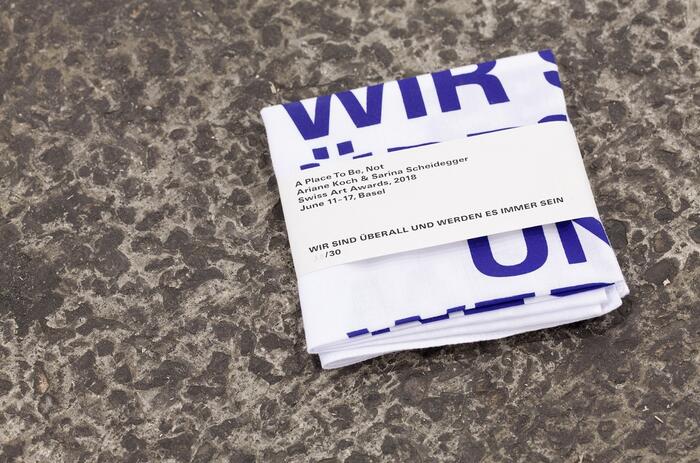
WHAT´S COOKING IN BOGOTÁ? - MEET FLORA´S 2018 RESIDENTS
By Valentina Gutiérrez Turbay.
(PART 1)
In the heart of San Felipe, a northern Bogotá neighbourhood in process of gentrification, there is a building where more than 20 artists from all over the world work, talk and coexist. Each one has his own workshop and does part of the activities of the curricular program, which includes encounters with curators, theorists, and leaders of indigenous communities among others. Founded by curator José Roca in 2016 The Flora School residence turned Bogotá into a meeting point for a diverse group of people interested in art. The reasons why artists choose this residence are many, although everyone agrees that the experience in Bogota represents an important moment in their career. Here are some of the 2018 residents:
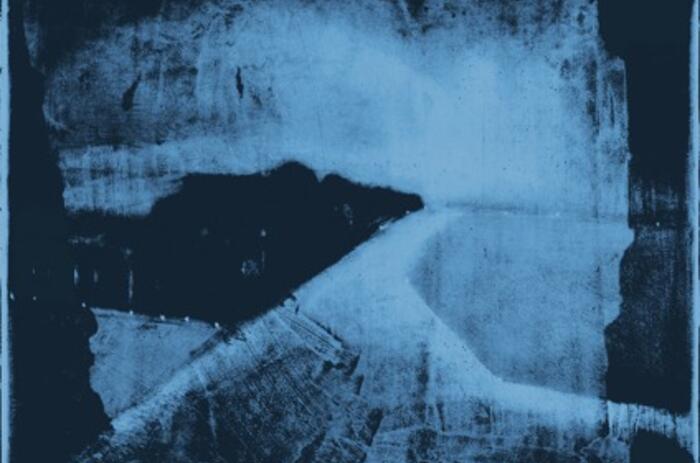
SEBASTIAN SPRENG: DRESDEN
In the Dresden Series created for this exhibition at the Lowe Art Museum, Sebastian Spreng moves away from the lyrical paintings of the past that were inspired by the ethereal beauty of nature to a subject of serious historical import. The Allied bombing of one of Europe’s most culturally significant and beautiful Baroque cities in February 1945 is a dark chapter in the story of war, and one that would be repeated in many horrific ways to this day. To capture the essence of its tragedies, Spreng explores new media and new technologies to produce 60 digital prints created on his IPAD directly on aluminum. Using photographs and computer manipulation of line and color that appear like ghostly shadows to scar painterly surfaces, Spreng turns to his lifelong love of music and poetry to inspire the many moods of war – from dark destruction to rays of light. Each work is named a Canto, a reference to divisions in poetry and music derived from the Latin for song, and for him inspired by Dante’s Divine Comedy and his cantos about purgatory. It is a perfect way for the artist to present the works as verses, approaching the series through mood. They are also odes to remembrance and hope for the future.
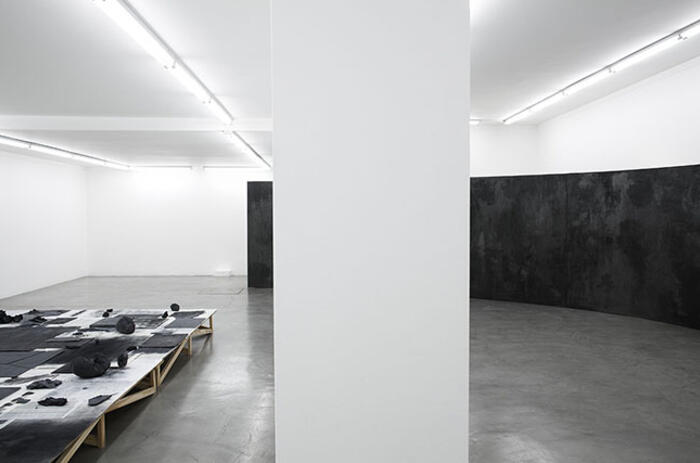
ELENA LOSÓN INAUGURATES UN MURO MAS ALLA AT HACHE GALERÍA IN BUENOS AIRES
At Loyola 32, in Villa Crespo (Argentina), over the ground of Hache graphite in powder, resin, papers and objects of coal universe. Upon entering the gallery a series of absorbent black panels make a wall. However, the wall is false, by means of a curve, the "gray mole" structure, as described by Max Gómez Canle, curator of the exhibition, deposited in the adjoining room where Horizonte (Horizon), the second work of Elena Loson, is presented as a Constellation of objects in a monochrome palette. Un muro más allá (A wall beyond) inaugurated on Tuesday 19th at Hache Gallery in Buenos Aires.
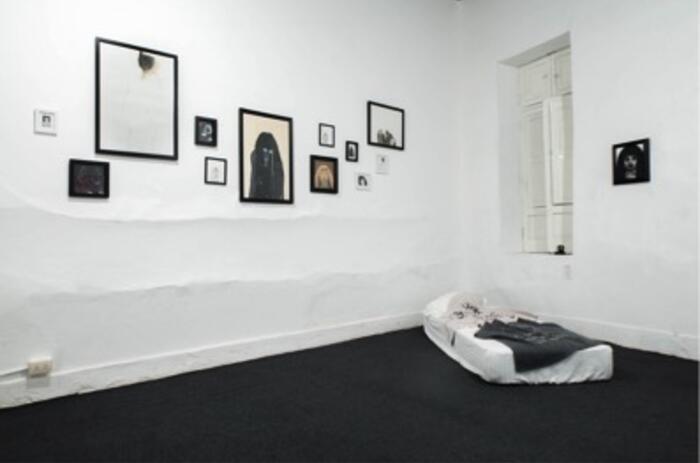
Crisis and Maria: Young projects take the lead in the contemporary Peruvian scene
Review by: Carlos Zevallos Trigoso
A sensation that is perceived today in Lima, especially among young artists, is that the activities of the art market do not offer enough stability and that the work necessary to build a personal career is crossed by factors that are not very transparent. It is in this context that initiatives are launched by young people, some of them artists, where they design for themselves and their peers some dynamics that allow them to relate to the market while maintaining greater control and with expectations much greater than that of commercial circulation. Two significant examples of this are Maria and Crisis galleries, projects with less than two years of activities that are directed towards the future with clear readings of the context and their needs.
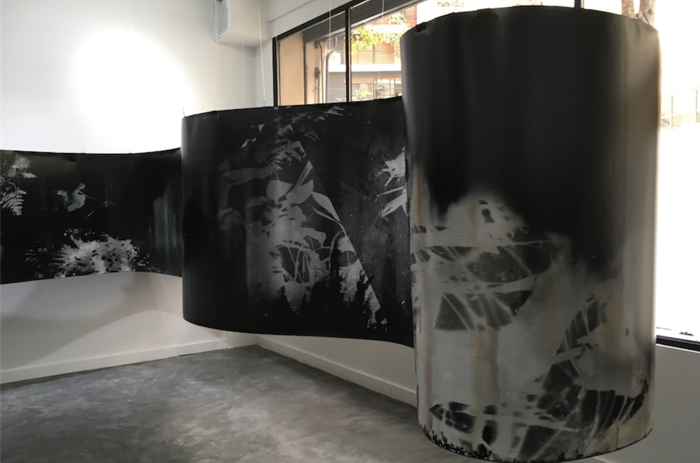
Roberto Huarcayas Amazonia- Bahuaja Sonene
In 2014, the non-profit organization Wildlife Conservation Society invited twelve Latin American artists to enter the Bahuaja Sonene Reserve located in the south east of Peru. The idea of the program was, through artistic expression, to make known the reservation to the region so that awareness is generated. Bahuaja Sonene is one of the six national parks with the most biodiversity on the planet. Among the poets, musicians, chefs and visual artists invited to represent this great landscape was Roberto Huarcaya, a Peruvian psychologist, photographer and artist who has been experimenting with the notion of territory for several years from his series of panoramas Campos de Batalla (Battlefields).
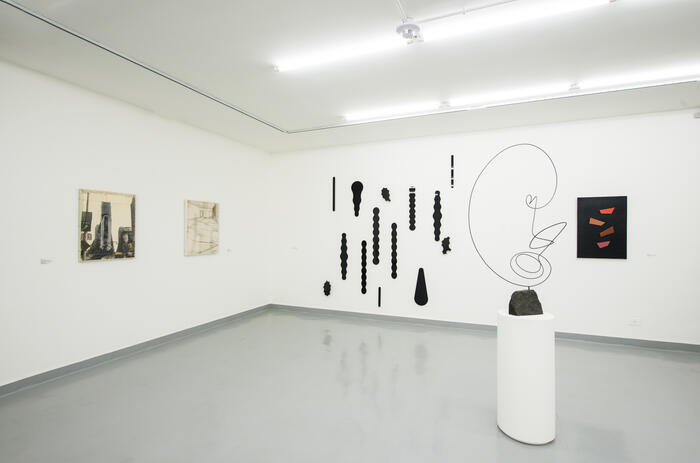
Klemm Fundation: El cuerpo de una colección.
Juan Cruz Pedroni write about ‘El cuerpo de una Colección’, the new permanent exhibition by Fundacion Klemm, curated by Federico Baeza and Guadalupe Chirotarrab.
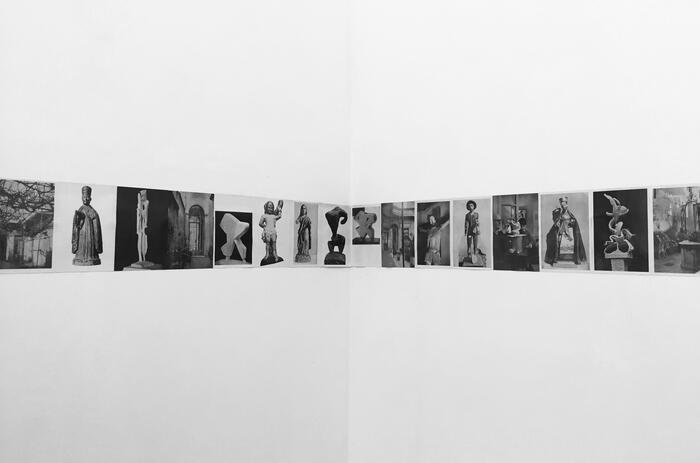
Medail & Pedroni: La semejanza y la Pausa
The notion of similarity seems to have a clear reference in the context of the exhibition: it refers to the use of photography as a reproduction, a faithful record of monuments and works. The connotations of the second term are, on the other hand, less evident, although they seem to point to the instants (or is it, perhaps, of places?) In which the alluded resemblance stops.




